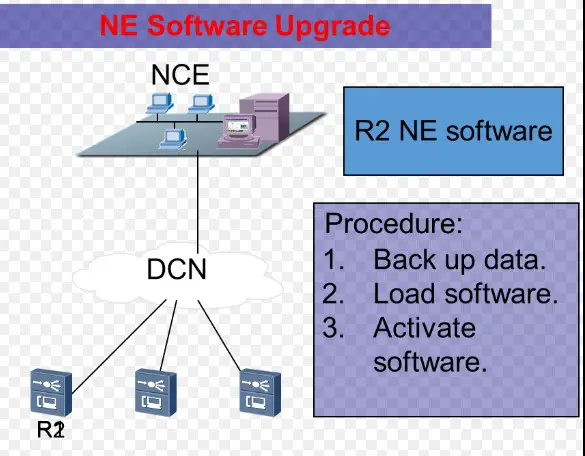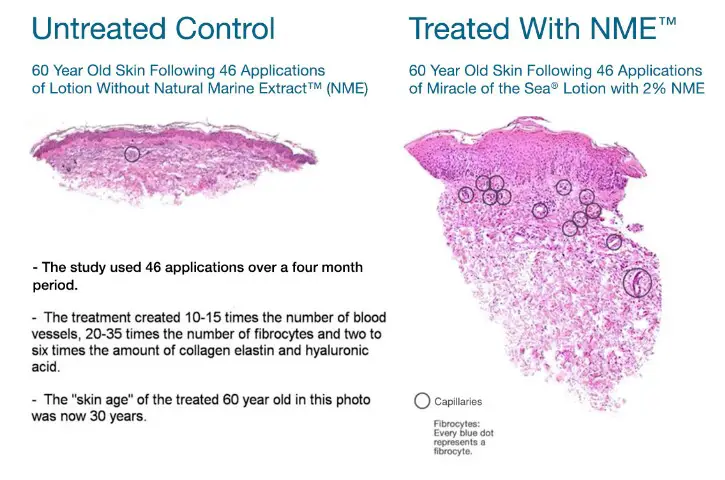The pharmaceutical industry is a realm where innovation and precision are paramount. The journey from a novel idea to a market-ready drug is intricate, guided by stringent regulations and the relentless pursuit of efficacy and safety. Central to this journey are the concepts of New Chemical Entities (NCE) and New Molecular Entities (NME), both of which play crucial roles in the development of new drugs that can treat diseases more effectively or address unmet medical needs.
The difference between NCE and NME lies primarily in their definitions and the roles they play in drug development. An NCE is a compound that has never before been approved for human use, offering a new avenue for treatment exploration. On the other hand, an NME refers to an active ingredient that has not previously been approved for marketing in any form, marking a significant advancement in pharmaceuticals. Understanding this distinction is crucial for grasping the nuances of drug discovery and development.
These terms encapsulate the essence of pharmaceutical innovation, marking milestones in the quest for new treatments. While NCEs introduce new chemical compounds into medical research, NMEs bring these compounds into the therapeutic realm, often transforming the treatment landscape. The process from discovery to approval illuminates the challenges and triumphs of pharmaceutical development, highlighting the importance of both NCE and NME in expanding the frontiers of medicine.

NCE Explained
Definition
In the pharmaceutical industry, a New Chemical Entity (NCE) represents a significant milestone. An NCE is a compound that introduces a previously unknown active ingredient to the market. This ingredient has not been used in clinical practice and has not been approved by regulatory bodies for human use. Understanding what qualifies as an NCE is essential for anyone involved in drug development or pharmaceuticals.
Regulatory Perspective
From a regulatory standpoint, an NCE holds a unique position. Regulatory agencies like the Food and Drug Administration (FDA) in the United States scrutinize NCEs closely. The reason is their novel nature and the lack of clinical history. For a compound to be designated as an NCE, it must pass through rigorous preclinical and clinical evaluations to establish its safety and efficacy.
Significance
Role in Pharmaceutical Innovation
NCEs are the lifeblood of pharmaceutical innovation. They represent the cutting edge of research and development, bringing new mechanisms of action and therapeutic options to the market. NCEs can target diseases with unmet medical needs, offering new hope to patients.
Impact on Drug Development Process
The introduction of an NCE into the drug development process is a turning point. It marks the transition from discovery research to development. NCEs require extensive testing, including:
- Toxicological assessments
- Clinical trials for safety and efficacy
- Regulatory review and approval
These steps ensure that the NCE is both effective and safe for patient use.
NME Unpacked
Definition
A New Molecular Entity (NME), while similar to an NCE, carries its unique definition. An NME is a term used primarily by the FDA to describe a product containing an active substance that has never been approved for marketing in the United States in any form.
Differences from NCE
The main difference between an NCE and an NME lies in the scope of their definitions. While all NMEs are NCEs, not all NCEs are recognized as NMEs. This distinction is crucial because it influences the regulatory pathways and the exclusivity periods granted to these entities.
Importance
Contribution to Medical Advancements
NMEs contribute significantly to medical advancements. By introducing entirely new active ingredients to the healthcare system, NMEs can offer solutions to challenging medical conditions that previously had no effective treatment options.
Benefits in Drug Discovery
The development of NMEs brings several benefits to the drug discovery process, including:
- The potential to explore new therapeutic areas
- The opportunity to utilize novel mechanisms of action
- The ability to provide more effective treatments with fewer side effects
NCE vs. NME
Key Distinctions
While NCE and NME are terms often used interchangeably, understanding their key distinctions is crucial. The primary difference lies in their regulatory definitions and the implications for drug development and approval processes.
Comparative Analysis of Definitions
An NCE is a broader term that encompasses any new active ingredient entering the market. In contrast, an NME specifically refers to a new molecule that the FDA has not previously approved in any form.
Regulatory Criteria Differences
The regulatory criteria for NCEs and NMEs differ, influencing their development strategies and market exclusivity. NMEs, for example, might be subject to different regulatory pathways or incentives designed to encourage the development of innovative therapies.
Application Process
Overview of FDA Approval Process for NCE and NME
The FDA approval process for both NCEs and NMEs involves several critical steps:
- Preclinical Testing: Laboratory and animal tests to identify potential safety issues.
- Clinical Trials: Human testing in three phases to assess safety, efficacy, and dosage.
- New Drug Application (NDA): Submission of all testing data to the FDA for review.
- FDA Review: Evaluation of the NDA to determine if the drug is safe and effective for its intended use.
- Post-Market Surveillance: Ongoing monitoring of the drug’s performance after it has been approved and marketed.
Challenges and Considerations for Pharmaceutical Companies
Pharmaceutical companies face numerous challenges when developing NCEs and NMEs, including:
- High costs of research and development
- Uncertainty in clinical trial outcomes
- Regulatory hurdles and the need for extensive documentation
- Market exclusivity periods that may affect the company’s return on investment

Case Studies
NCE Success Stories
Examples of Successful NCE Drugs
In the realm of pharmaceuticals, several NCE drugs have made significant impacts on healthcare, transforming patient outcomes across various disease spectrums. For instance, sofosbuvir, a groundbreaking antiviral medication for hepatitis C, stands out. Its introduction revolutionized the treatment landscape for this chronic infection, offering cure rates above 90%. Another notable example is imatinib (Gleevec), which dramatically improved the prognosis for patients with chronic myeloid leukemia (CML) and certain gastrointestinal tumors. These success stories underscore the potential of NCEs to address unmet medical needs and offer new hope to patients.
Impact on Healthcare
The introduction of successful NCE drugs has led to profound shifts in treatment paradigms. They offer targeted therapies with higher efficacy and fewer side effects, significantly improving patient quality of life. Moreover, these advancements often reduce the need for more invasive treatments, thereby decreasing overall healthcare costs.
NME Breakthroughs
Highlighting NME Advancements
NMEs have been pivotal in advancing treatment options for rare and complex diseases. For example, nusinersen (Spinraza) emerged as the first approved drug for spinal muscular atrophy (SMA), a rare genetic disorder. This NME offers hope to patients with a condition that previously had no effective treatments. Additionally, olaparib (Lynparza), targeting specific mutations in cancer cells, exemplifies how NMEs can lead to personalized medicine, offering targeted and more effective cancer treatments.
Role in Treating Rare Diseases
NMEs often play a critical role in treating rare diseases, areas where traditional drug development has lagged due to the small patient populations. Their development is encouraged through regulatory incentives like orphan drug designation, which provides benefits such as market exclusivity to support the research and marketing of treatments for rare diseases.
Industry Perspectives
Pharmaceutical Industry
How the Industry Views NCE and NME
The pharmaceutical industry sees NCEs and NMEs as opportunities for growth and innovation. These entities are at the heart of the industry’s mission to deliver new solutions to patient needs. The development of NCEs and NMEs is also seen as a strategic investment, with the potential for significant financial returns due to patent protections and market exclusivity.
The Economic and Innovation Implications
The economic implications of developing NCEs and NMEs are substantial. These drugs can command premium pricing, reflecting their novelty, the complexity of their development, and their potential to offer treatments where none existed. From an innovation standpoint, the pursuit of NCEs and NMEs drives advancements in research methodologies, biotechnology, and understanding of disease mechanisms.
Healthcare Providers
Impact on Prescribing Practices
For healthcare providers, the availability of NCEs and NMEs significantly affects prescribing practices. These new drugs often provide more effective treatment options or address gaps in existing therapies. Providers must stay informed about the latest developments to integrate these advancements into patient care effectively.
Benefits to Patient Care
The introduction of NCEs and NMEs into clinical practice brings substantial benefits to patient care, including improved treatment outcomes, reduced side effects, and the potential to treat conditions previously deemed untreatable. This progress not only enhances the quality of life for patients but also contributes to the broader goals of public health and longevity.
Future Directions
Research and Development
Emerging Trends in NCE and NME Development
The future of NCE and NME development is promising, with trends pointing towards precision medicine, biologics, and gene therapies. Precision medicine involves tailoring treatments to individual patients based on genetic, biomarker, and phenotypic data. Biologics are gaining attention for their potential to target diseases more effectively with fewer side effects than traditional chemical drugs. Gene therapy represents a frontier in treating genetic disorders by directly addressing the underlying genetic causes.
Potential for Future Medical Breakthroughs
The ongoing research and development in NCEs and NMEs hold the potential for revolutionary medical breakthroughs. As our understanding of disease mechanisms deepens and technological capabilities advance, we are poised to see new treatments for a wide range of diseases, including those considered intractable.
Regulatory Evolution
Possible Changes in Regulatory Frameworks
The regulatory landscape for NCEs and NMEs is likely to evolve, with regulators seeking to balance the need for innovation with ensuring patient safety. We may see more adaptive and flexible regulatory approaches, such as accelerated approval processes for breakthrough therapies and more collaborative interactions between pharmaceutical companies and regulatory agencies.
Frequently Asked Questions
What is a New Chemical Entity (NCE)?
A New Chemical Entity (NCE) refers to a compound that has not previously been approved for human use. It represents the forefront of pharmaceutical research, embodying a novel approach to treatment. NCEs are crucial for developing innovative drugs that can address previously untreatable conditions or offer more effective or safer alternatives to existing therapies.
How does an NME differ from an NCE?
An NME, or New Molecular Entity, is a term that specifically refers to an active ingredient that has not been approved for marketing in any form before. While all NMEs are NCEs, not all NCEs qualify as NMEs. The distinction often lies in the scope of approval and the potential for a compound to offer new therapeutic benefits.
Why are NCE and NME important in drug development?
NCEs and NMEs are pivotal in drug development because they introduce new treatment options into the healthcare system. They are indicators of innovation within the pharmaceutical industry, paving the way for advancements in treating various diseases. The development and approval of these entities are vital steps toward enhancing patient care and addressing unmet medical needs.
How does the FDA regulate NCEs and NMEs?
The FDA regulates NCEs and NMEs through a comprehensive review process that evaluates their safety, efficacy, and manufacturing quality. This process includes preclinical research, clinical trials, and a thorough assessment of the drug’s benefits versus its risks. The FDA’s stringent regulations ensure that only those compounds that significantly contribute to medical advancement reach the market.
Conclusion
The distinction between New Chemical Entities and New Molecular Entities underscores the complexity and innovation inherent in the pharmaceutical industry. These concepts are not just semantic differences but represent critical stages in the journey of a compound from the laboratory to the pharmacy shelf. They symbolize the ongoing quest for new treatments that can improve patient outcomes and broaden the horizons of medical science.
As the landscape of healthcare continues to evolve, the roles of NCEs and NMEs in drug development highlight the importance of continuous research and innovation. By understanding these key terms, we can appreciate the monumental effort behind every new medication and the hope they bring to patients worldwide. The journey from an NCE to an NME, and ultimately to a marketable drug, is a testament to the dedication of researchers, scientists, and regulators in their relentless pursuit of advancing human health.

